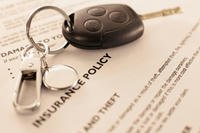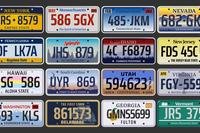By comparison shopping, you can save hundreds of dollars on your annual auto insurance premiums, while making sure that you're well protected in case of an accident, injury, or theft.
Even though auto insurance is expensive -- on average, $870 annually per car -- many people purchase policies with little or no research.
But insurance premiums (the payments you make to purchase coverage) can vary by as much as 300 percent, depending on the company you choose. That's why it's important to comparison shop and to do your research before choosing an auto insurer. (You can compare auto insurance premiums in minutes here.)
Types Of Auto Insurance
Auto insurance companies offer many different types of coverage. And most states require drivers to purchase a minimum amount of certain types of coverage. Here are brief descriptions of the types of auto insurance coverage:
- Bodily injury liability coverage. This coverage is mandatory in most states. Bodily injury coverage pays for medical bills, lost wages, rehabilitation, treatment, and/or funeral costs for anyone injured or killed by your car. Such coverage will also pay for "pain and suffering" damages when a third party successfully sues.
- Property-damage liability coverage. This coverage pays for the repair and replacement of vehicles and other property damaged in an accident when you or another authorized driver causes an accident.
- Personal injury protection. Pays medical expenses and some percentage of lost wages to you or anyone authorized to drive your car, no matter who caused the accident.
- Medical payments coverage. Usually optional, this coverage pays for medical expenses over and above amounts covered by personal insurance protection, no matter who caused the accident.
- Umbrella policy. Pays for losses above and beyond those covered by either auto or homeowner's insurance; this is sometimes a cost-effective way to purchase liability insurance.
- Collision coverage. Pays for damage to your car, less any deductible, no matter who is at fault. If your car is financed, your lender may require you to buy this coverage and may even require a particular deductible amount.
- Comprehensive coverage. Pays for damage to or loss of your car in the event of fire, theft, or vandalism. Again, your lender may require this coverage if your car is financed.
- Protection from an uninsured or underinsured motorist coverage. Protects you, passengers, and anyone authorized to drive your car against bodily injury caused by an uninsured, underinsured, or hit-and-run driver.
- Rental reimbursement. Reimburses up to a specified amount per day for car rental or transportation costs while your car is being repaired following an accident.
- Towing and labor. Covers up to a specified amount for towing and labor charges when your car breaks down, whether or not there is an accident involved.
- Auto replacement. Pays for the full replacement value of the car, not its depreciated value.
How Much Coverage To Carry
You can save time and money shopping for auto insurance if you know what you want and need:
- Find out about insurance requirements in your state. Requirements differ from state to state. Look up your state's insurance requirements through the National Association of Insurance Commissioners.
- Find out what your automobile is worth. You can look up the current value of your car on Kelley Blue Book.
- Have a rough idea of your net worth, or what you're protecting when you carry liability coverage. Buy enough liability coverage to protect your assets in case of an accident.
Here are some specific guidelines for the different types of coverage:
- Bodily injury liability coverage. Experts agree that this is the most important type of coverage to carry. Consumer Reports recommends that people with a home and other assets buy coverage of at least $100,000 per person and $300,000 per accident. People with fewer assets can buy the state minimum. The biggest mistake consumers make is being underinsured on bodily injury liability coverage and overinsured on collision and comprehensive coverage.
- Property-damage liability coverage. Consumer Reports recommends purchasing at least $100,000 per car.
- Medical payments coverage. Whether you need optional medical coverage and how much you need depend on what your health insurance coverage includes. Some experts recommend that people with excellent health insurance benefits and low co-payments purchase just the state minimum. It's important to remember that medical payments coverage also pays the medical expenses for passengers in the car who may not be so well insured, which your regular health insurance won't cover.
- Collision and comprehensive. You should take the highest deductible you can afford on collision and comprehensive, especially if you have a newer car. If you have an older, modestly priced, or inexpensive car, you may want to consider dropping collision and comprehensive coverage altogether. However, you should only drop collision if you can afford to repair or replace the car in the event of an accident.
- Umbrella policy. Some experts recommend that people with assets over $300,000 purchase a $1 million liability umbrella policy in addition to other auto insurance. (This added protection will cost you an extra $150-$300 a year in insurance fees.)
- Uninsured/underinsured motorist coverage. Consumer Reports suggests buying at least $100,000 per person and $300,000 per accident.
Questions Insurers Ask
The price of an auto insurance policy will depend on a number of factors, some of which you can control and some of which you can't. You should have answers to the following questions on hand when you apply for auto insurance:
- Make, model and year of car. You may be asked how many doors your car has, whether it has two- or four-wheel drive, and the engine size in cubic inches.
- Where you live. People in large metropolitan areas tend to pay more for car insurance than people who live in rural areas. People with certain ZIP codes or who live in certain areas within a city pay more than others.
- Driving record and experience. You'll be asked about any history of accidents and traffic violations.
- Age, gender, and marital status of drivers. Men often pay more than women. Younger drivers often pay higher premiums. Generally, unmarried men under age 25 pay the highest premiums.
- Length of time licensed within a state.
- Driver training course for new drivers. You will be asked if a driver who has just received a license has taken a driver training course.
- What the car is used for. Drivers who use their cars for "pleasure" pay less than those who use them for commuting to work.
- The number of miles driven each year. Some insurers ask for daily and annual mileage averages.
- The number of cars to be insured. Including two or more cars on the same policy can save you money.
- Home ownership.
- Employment history. Insurance companies are particularly interested in how long you have been with the same employer.
- Whether or not the driver smokes.
- Where the vehicle is kept. Cars kept in garages usually cost less to insure.
- Safety features. Cars with antilock brakes and air bags often cost less to insure than cars without these features.
- Credit history. Insurance companies may inquire whether you have been denied credit within the last 12 months.
- A copy of your driver's license, vehicle registration, and vehicle identification number.
- The type of coverage you want.
To avoid problems later on if you do have to file a claim, it's best to be honest when answering these questions.
Saving On Auto Insurance
Here are some tips for saving on auto insurance:
- Raise the deductibles. One way to save money is to take the highest deductibles on collision and comprehensive coverage that you can afford. A higher deductible means lower premiums.
- Choose a car that costs less to insure. Buying a "low-profile" car -- one that's rarely stolen and not too expensive to repair -- can help cut insurance costs. Research the cost of insurance before buying a car. Sports cars, for instance, are very expensive to insure while the least costly cars are small and midsized sedans and minivans.
- When away, cancel collision coverage. If you won't be driving for a long period of time -- more than 30 days, say -- you should notify your insurance company. Sometimes it's possible to cancel collision premiums for this period of time.
- Insure a teenage driver on your family policy rather than on a separate policy. This will usually save money. Explore discounts for teenagers who have a good academic record, have successfully passed a driver training course, or who don't smoke.
- Find out if your employer gets preferred rates through a group plan.
- Use your car for pleasure and other purposes, and commute to work on public transportation. This can save you money on your policy.
- If you are an older driver, investigate rates offered through organizations like the American Association of Retired Persons (AARP).
- If you have collision coverage on your auto, you don't need the collision-damage coverage when you rent a car. People who rent cars frequently may want to purchase a nonowner liability policy for about $300 a year, rather than pay for the expensive collision-damage coverage each time they rent a car.
Insurance companies offer many discounts. Be sure to ask if discounts are offered for the following:
- Good driving record. Generally, a clean record -- no accidents or moving violations for the past three years -- will result in lower premiums.
- Drivers over 55 who have taken a recent driving course.
- Carpool drivers. Drivers who carpool to work sometimes receive a 10-20 percent discount on premiums.
- Insuring more than one car on the same policy may earn you a 15-20 percent discount.
- Low annual mileage. Some companies offer discounts if you drive less than a certain number of miles each year.
- College students away at school. Some insurers offer discounts to parents with a college-age student who attends school more than 100 miles from home and doesn't keep a car on campus.
- Antitheft devices. Some insurers offer 5-15 percent discounts for alarm systems, wheel locks, hood locks, and ignition protection devices.
- Safety devices. You may receive up to a 30 percent discount in medical coverage for automatic seat belts and air bags. Some states like Florida, New Jersey, and New York require insurers to give discounts for cars equipped with antilock brakes.
- Being a nonsmoker. Smoking is considered a high-risk behavior. Nonsmoking drivers may receive discounts on liability, medical benefits, and collision.
- Long-time customers. Although it's wise to comparison shop, it doesn't always make sense to switch companies. Some insurers reward long-time customers with discounts and other money-saving programs.
- Insuring your vehicle with the same carrier you use for homeowner's insurance.
Comparing Insurance Companies
Once you know the questions to ask and the coverage you want, it's time to comparison shop by contacting insurance companies and agencies.
- Contact a number of companies, including large companies that sell auto insurance through their own agents, independent agents who sell for several different insurance companies, and "direct writers," or insurance companies that sell to the public over the phone or on the Internet.
- Get as many quotes as possible. Many states offer free comparisons of auto insurance prices. It's also possible to get quotes over the phone.
- Use the Internet. Some companies offer online quotes and even provide comparison quotes from three of their largest competitors. There are also many websites that let you compare different companies online
- Ask friends for recommendations. Be sure to ask about reliability and how quickly claims are processed.
- Check the insurance companies' complaint records. You can find out how many consumer complaints were filed against insurance companies through the Web site of the National Association of Insurance Commissioners.
- Look up the companies' consumer satisfaction ratings. You can find these through J. D. Power and Associates.
- If you fall into the "hard-to-insure" category because of past accidents or moving violations, look for a company that offers "nonstandard" coverage. If this isn't an option, you'll have to purchase insurance through the company that's assigned through the state's high-risk pool.
Take the First Step
Compare insurance company premiums now with our auto insurance quote comparison tool. Receive competing quotes in minutes.
Written with the help of Courtney Nash, General Research Specialist at Ceridian Corporation.
(c) 1999, 2005 Ceridian Corporation. All rights reserved.











